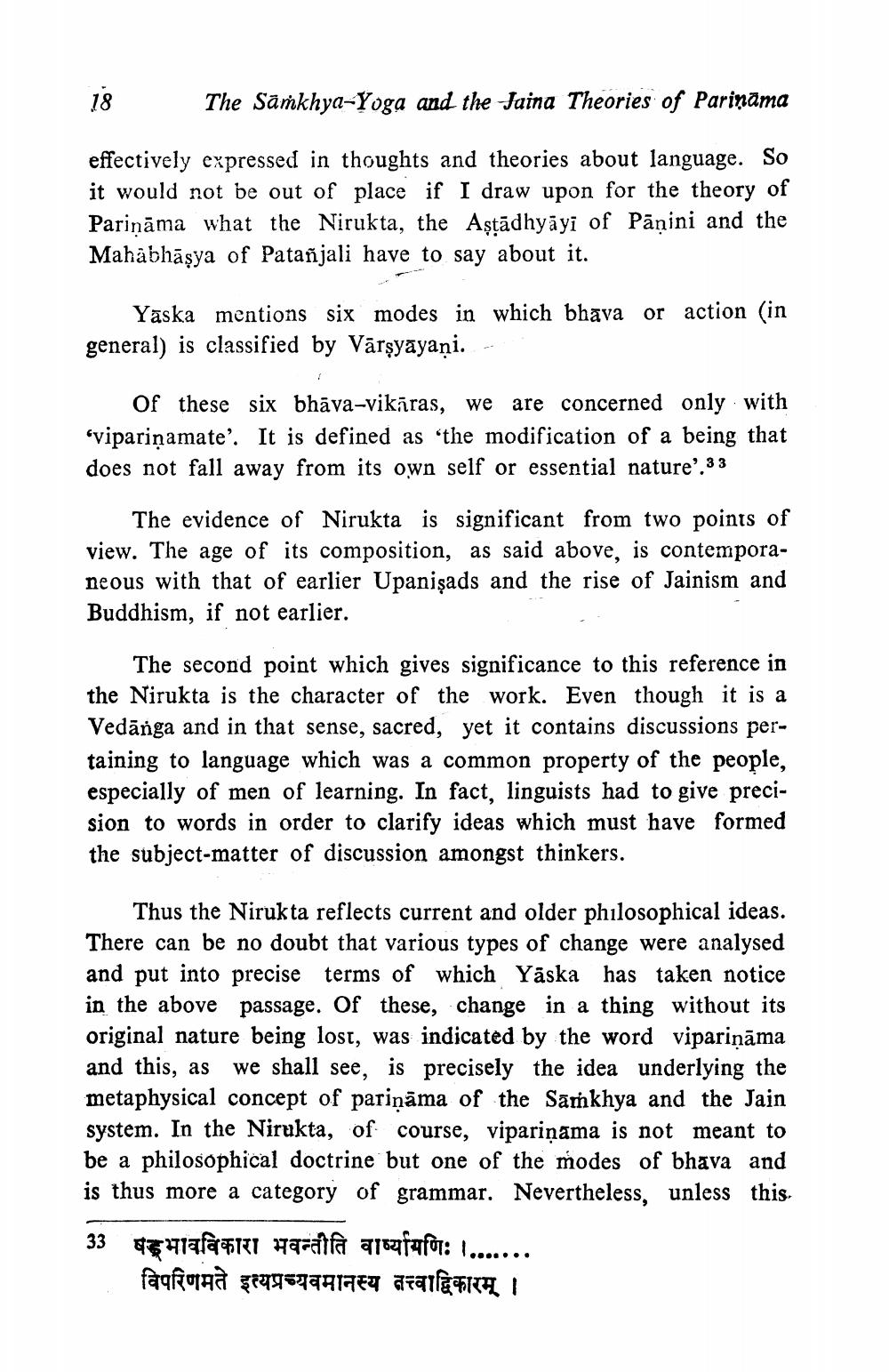________________
18
The Samkhya-Yoga and the Jaina Theories of Parinama
effectively expressed in thoughts and theories about language. So it would not be out of place if I draw upon for the theory of Pariņāma what the Nirukta, the Aştādhyāyi of Pāṇini and the Mahabhāşya of Patañjali have to say about it.
Yaska mentions six modes in which bhava or action in general) is classified by Vārşyayaņi. -
Of these six bhāva-vikaras, we are concerned only with “vipariņamate'. It is defined as the modification of a being that does not fall away from its own self or essential nature'. 33
The evidence of Nirukta is significant from two points of view. The age of its composition, as said above, is contemporaneous with that of earlier Upanişads and the rise of Jainism and Buddhism, if not earlier.
The second point which gives significance to this reference in the Nirukta is the character of the work. Even though it is a Vedānga and in that sense, sacred, yet it contains discussions pertaining to language which was a common property of the people, especially of men of learning. In fact, linguists had to give precision to words in order to clarify ideas which must have formed the subject matter of discussion amongst thinkers.
Thus the Nirukta reflects current and older philosophical ideas. There can be no doubt that various types of change were analysed and put into precise terms of which Yåska has taken notice in the above passage. Of these, change in a thing without its original nature being lost, was indicated by the word vipariņāma and this, as we shall see, is precisely the idea underlying the metaphysical concept of pariņāma of the Sārkhya and the Jain system. In the Nirukta, of course, vipariņāma is not meant to be a philosophical doctrine but one of the modes of bhava and is thus more a category of grammar. Nevertheless, unless this.
16h1af$iti wanalfa aszfafor: 1...... विपरिणमते इत्यप्रच्यवमानस्य तत्त्वाद्विकारम् ।




